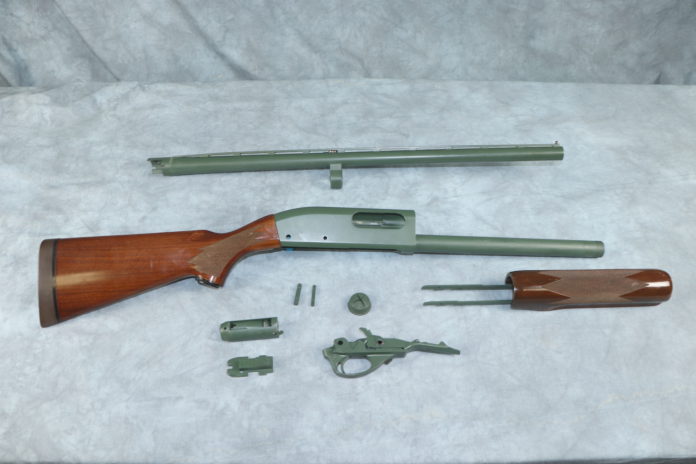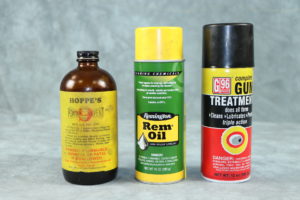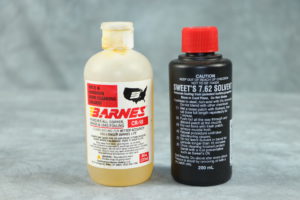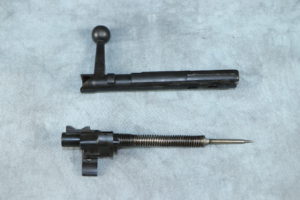
BY STEVE COMUS
This time of year, we are now in between most hunting seasons, which begs the question: What to do?
In normal times, it could be a great opportunity to reload a bunch of ammo for the coming year. But, given the paucity of components like bullets, powder and primers, reloading may not be a viable option for lots of folks.
Yet, idle time can be great for addressing those dreaded activities like gun cleaning and maintenance. They have to be done sooner or later, and now is both sooner and later, so it’s time.
Yes, this is a great time to do some deep cleaning and for conditioning metal parts to keep them from rusting so they will be ready when the next hunting seasons roll around.
For pump or semi-auto shotguns, it is actually pretty easy because they are made to take apart to clean — which many hunters don’t bother to do until they get so gummed up that they don’t function properly.
Simply follow the instructions about how to remove the barrel and then remove the forend, the bolt, bolt carrier and trigger group.

Use some kind of chemical cleaner like G96, or even Hoppe’s No. 9 powder solvent works great. Simply use the chemical and a rag along with some Q-tips and an old toothbrush to get the crud out of the parts and inside of the action.
For the inside of the barrel and the inside of the choke tubes, if the gun has interchangeable tubes, it is time to get out all of the powder residue and embedded plastic from the wads.
Use a plastic or brass brush soaked in a solvent like Hoppe’s No. 9 and stroke the barrel and tubes until they are wet. Let them soak for a while (overnight is great) and then use the brush again to loosen the crud.
Next, use a swab, cleaning patch or even a wad of paper towel or toilet paper to wipe the barrel/choke tubes clean. Repeat this process until all of the powder and plastic residue are out and the inside of the barrel/choke tubes is shiny.
Most of the plastic build-up happens just fore of the chamber and at the back end of the choke tubes, so pay close attention to those areas.

Those chemicals also leave an oily residue on the metal parts. That’s nice. If some other kind of chemical like carburetor cleaner is used, follow up with a light oil like Rem Oil. That will keep the metal parts conditioned during the time between the cleaning and the next season.
For those who lost the instructions that came with the gun when it was new, like I seem to do routinely, there are videos on the Internet that show how to disassemble and reassemble just about any model of gun there is.
Properly cleaning a rifle is more or less the same, except for cleaning the inside of the barrel. Relatively few hunters really do this right.
For pump and semi-auto rifles, the initial routine is similar to that for such shotguns. For bolt-action rifles, it can be a good idea to disassemble the bolt and clean out the inside of the bolt, as well as the striker and spring.
Old Mauser bolts, those from other militaries and Winchester Model 70s are the easiest to disassemble and reassemble. Some commercial bolts can require a tool/fixture — things that don’t cost a lot from places like Brownell’s and are really handy to have.
Once the inside of the bolt, striker and spring are clean, coat them in grease, reassemble and they’re ready for action.

Cleaning the inside of the barrel on a rifle is more than simply using some solvent, running the cleaning brush and patch down the barrel a few times and leaving it like that (when possible, clean the inside of the barrel from the chamber end to preclude damaging the muzzle, which can ruin accuracy in extreme cases).
Because of the heat and pressure created when centerfire rifles are shot, there will be build-up of both powder residue and copper from the jackets of the bullets.
A routine that works great is to use something like Hoppe’s No. 9 to clean the barrel first — use a nylon brush to wet down the barrel, let it soak for an hour or so, or overnight, and then use a cloth patch to wipe it “clean.”
This may need to be done more than once, depending on how much crud and blue or green from the copper is in the barrel. Repeat until no more black or blue or green comes out on the cloth patch.
Next, use one of the many ammonia-based bore cleaners like Barnes CR-10 or Sweet’s 7.62 solvent. An important note here: follow the instructions on the container to the letter.
It can take several cycles with these chemicals to get all of the copper out of the barrel – especially the bottoms of the grooves.
Once the copper is out, use some oily chemical like Hoppe’s No. 9 or a light oil like Rem Oil to soak the inside of the barrel for storage.
Those ammonia-based copper fouling removers leave the bare metal exposed and even the moisture in the air is enough to damage the inside of the barrel if some kind of oil is not applied quickly after the ammonia-based chemicals are used.
When it comes to storage, it can be a bad idea to store long guns in soft cases because the padding in the case itself can retain enough moisture to rust the gun over time.
It is better to store the gun in a dry place, like the inside of a gun safe that also has a dehumidifying unit.
Inside the gun safe, the guns can be stored “naked,” so to speak, or sometimes a gun sock is handy to keep the gun from being dinged when it is put into and taken out of the safe.
When the next season rolls around, it is a good idea to check the gun to make sure all of the metal surfaces are still clean – and if not, give them a quick once-over with light oil or Hoppe’s No. 9.
By cleaning and storing the gun properly, it will be ready the next time it is used.


